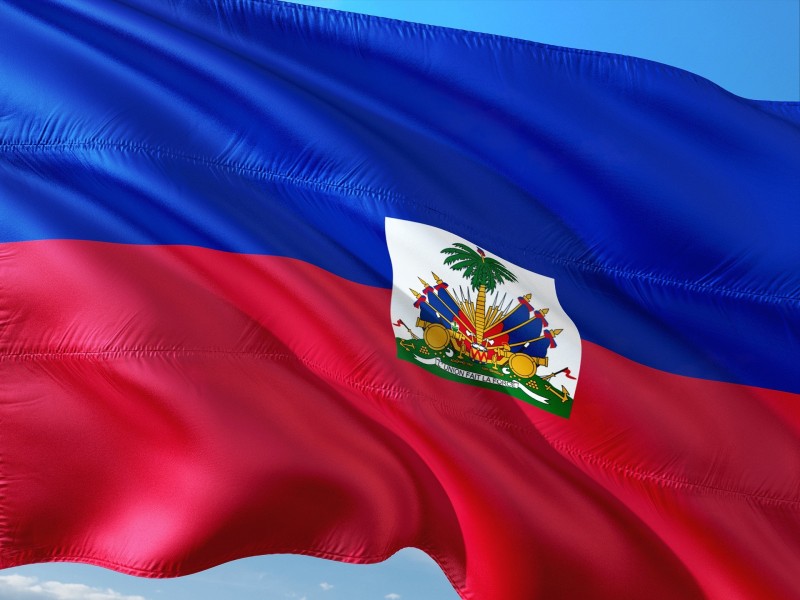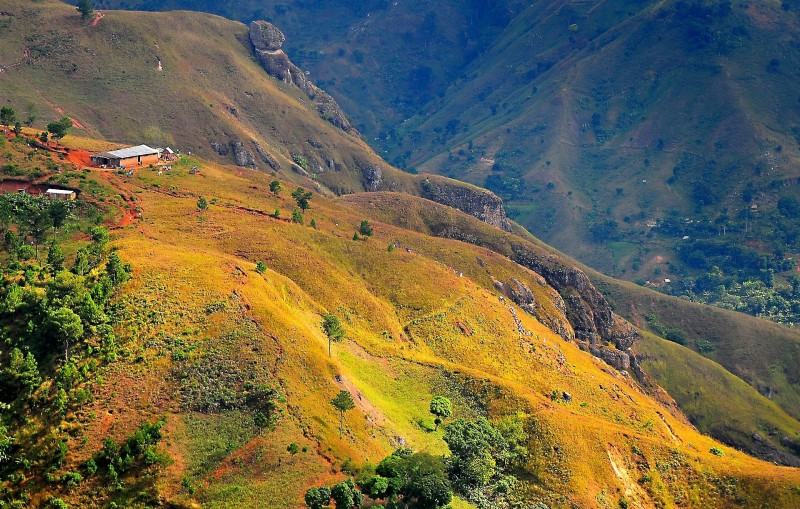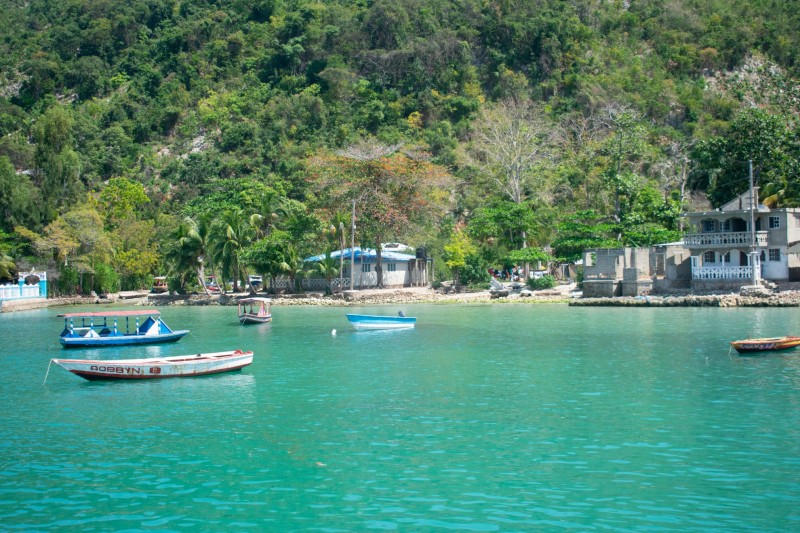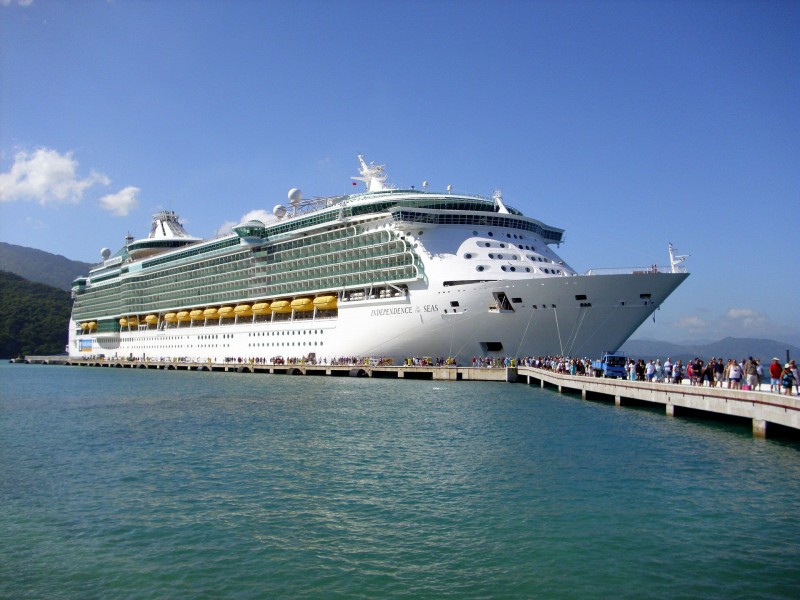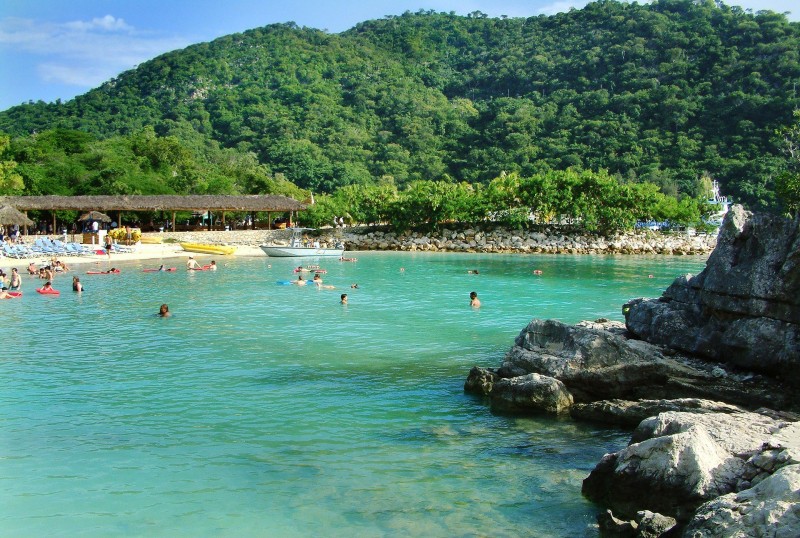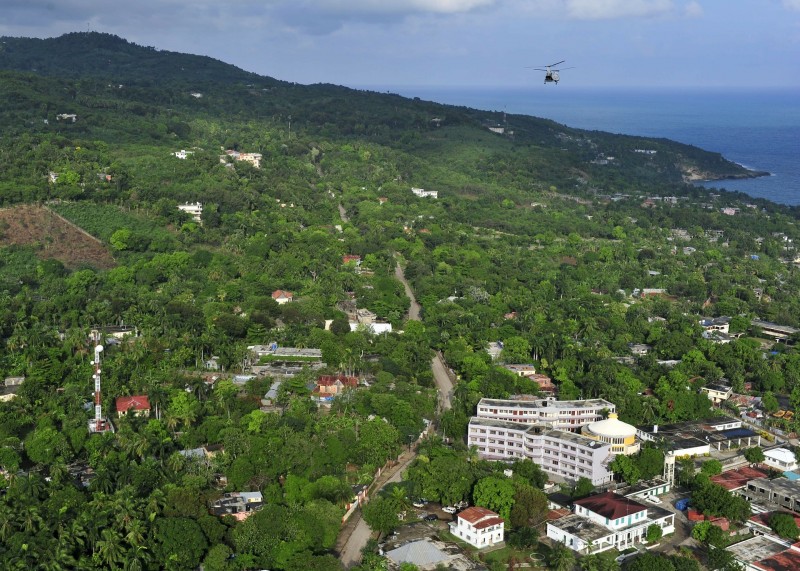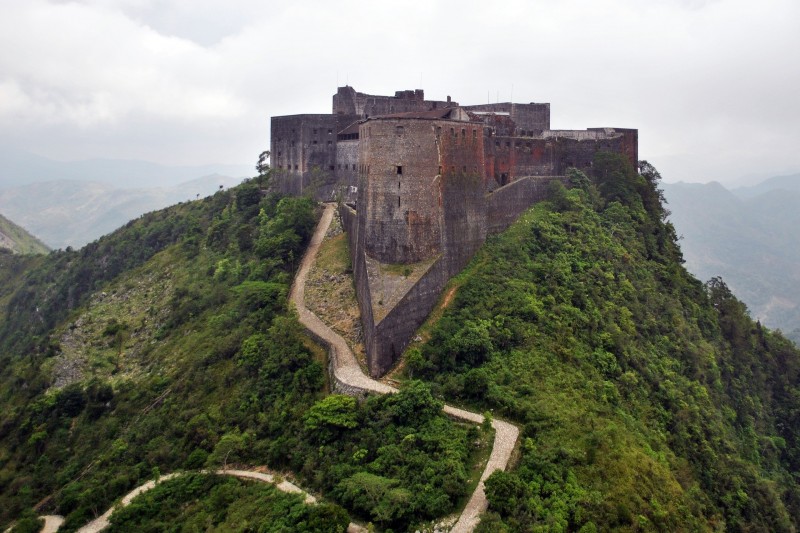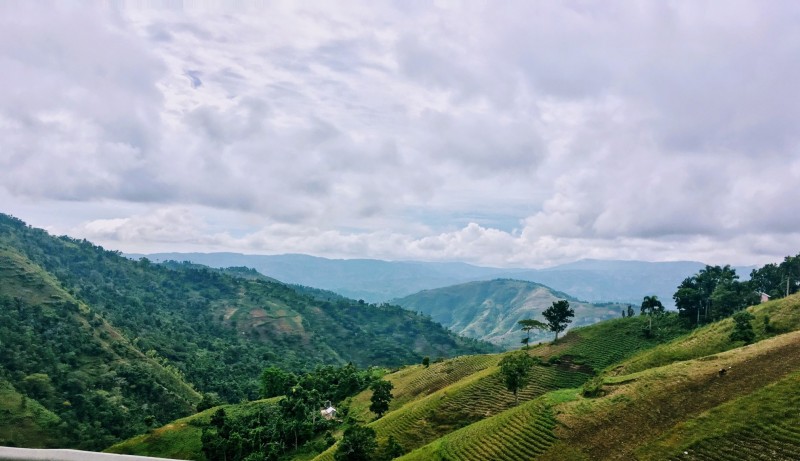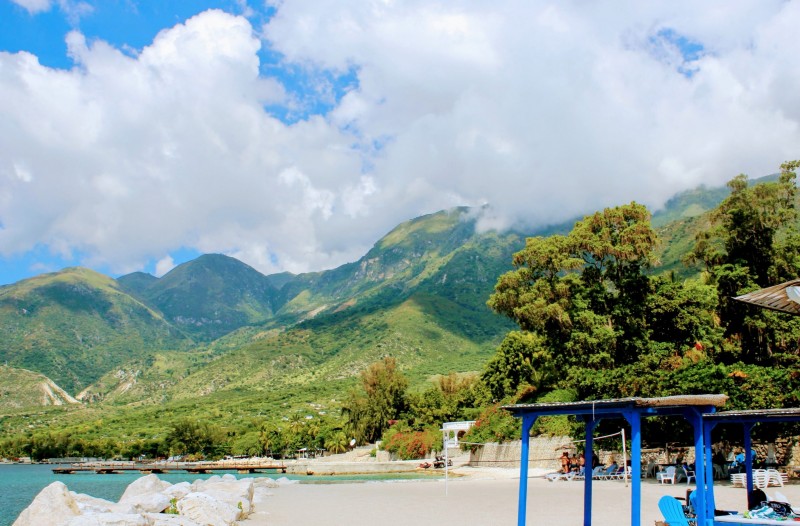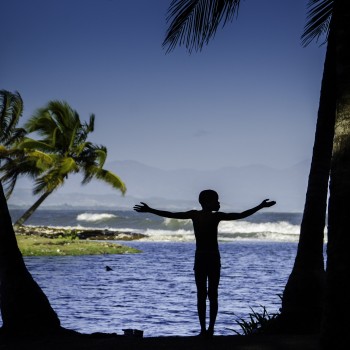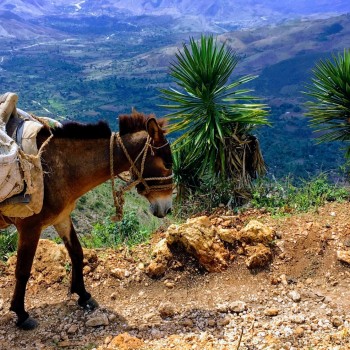Haiti
Haiti
Capital city description
Port-au-Prince is the capital, chief port, and commercial center of the West Indian republic of Haiti. It is situated on a magnificent bay at the apex of the Gulf of Gonâve , which is protected from the open sea by the island of La Gonâve. The city was laid out in a grid pattern in 1749 by the French and called L’Hôpital. It has suffered frequently from fires, civil strife, and earthquakes. There is air service to the United States, Canada, France, and other Caribbean islands; however, the area surrounding the capital’s international airport has been the site of violence caused by United Nations peacekeeping force conflicts with armed forces gang members. There are some foreign-owned factories and assembly plants in the vicinity of the airport. Otherwise, employment is mainly to be found in the informal sector, such as cooking, shelling peanuts, and selling paintings and other handicrafts.
Port-au-Prince is the center of the political and intellectual life of the country and is the seat of the State University of Haiti (established in 1920). The bold and bustling Iron Market has traditionally been a picturesque site, with its primarily female vendors. Recreation for the privileged centers around European-style social clubs, but the house of the local voodoo priest is still the heart of the poor urban community.
Climate
Haiti has a warm, humid tropical climate characterized by diurnal temperature variations that are greater than the annual variations; temperatures are modified by elevation. Average temperatures range from the high 70s F (about 25 °C) in January and February to the mid-80s F (about 30 °C) in July and August.
Languages spoken
French and Haitian Creole
Fun/Fascinating Facts
- Haiti’s mountain peaks reach over 8,000 feet, and Haiti comes from the word Ayiti meaning ‘Land of Mountains.’ This name was given by the original inhabitants of the island, the Taino people.
- There are surviving cave paintings from the Taino people all over the country. These paintings are now adopted as national symbols and serve as one of the country’s most unique tourist attractions.
- Animal rights activists in the U.S. denounced the activity as inhumane, but in Haiti, the popularity of Cock Fighting skyrockets. Raw meat and hot pepper soaked in rum are fed to cocks to make them tough and aggressive, and the owner of the winning cock wins $70, which is what more than 80% of Haitians earn in a month, making it very lucrative.
- In the 1970s, Haiti introduced a law that offered easy divorces where only 1 of the married persons needed to be present for the divorce to happen.
- Haiti has 5,600 plant species living in the nine life zones from sea levels to mountain tops. Haiti is also home to endangered mammal species, including the Haitian Solenodon.
Unique Customs/Traditions
- Performing rites and ceremonies in honor of nature form the basis of many of Haiti's voodoo traditions, something that Saharon Gynup writes about in "National Geographic News." A voodoo priest or priestess leads ceremonies for honoring the dead, famously celebrated in their year and one-day rituals, healing the sick or asking spirits for advice. Followers gather outdoors to recognize Loa, the spirit pantheon overseeing the universe.
- Haiti's largest annual event takes place throughout the country. However, the most significant event called Haitian Defile Kanaval is held in the capital, Port-au-Prince, Haiti, every year. Like New Orleans' Mardi Gras celebration, Haiti's Carnival involves parades, costumes, local music, and dancing in the streets to herald the holy season.
- Indigenous to Haiti, the Rara Festival is a peasant carnival. Rara, though, has several incarnations beyond wild street parties. Rara also refers to a distinctly Haitian style of music and dance that is usually played during Easter week in Haiti. Musicians play vaskin, a type of bamboo horn, and drums and tin trumpets. Ancient as well as pop songs make up the musicians' repertoire.
- Haiti's African, Spanish, French, and island cultures merge in its rich artistic traditions. Paintings and sculptures often feature naive styles and reflect native Tainos culture. Palettes tend toward glowing, nearly neon colors.
Popular universities
| Name | Description | |
|---|---|---|
| The American University of the Caribbean | The American University of the Caribbean (AUC) in Les Cayes, Haiti. It was founded and incorporated in 1983 as a not-for-profit institution organized exclusively for educational and scientific purposes. It is incorporated in the State of Florida, recognized by, and licensed with, the “Ministère de l’Education Nationale et de la Formation Professionelle de la République d’Haïti.”The university opened its doors and began instruction programs in 1986 at Rue Antoine Simon in Les Cayes—a peaceful, developing city with excellent resources and a dynamic local population that welcomes the university. In 1989, the university moved to its present site, the Pierre Toussaint Campus, Charpentier, and into a spacious 61,000 sq ft (5,700 m2) building, which was funded by the American Schools and Hospitals Abroad (ASHA).The university is a developing institution that offers programs and degrees based on the articulated needs of the people of Haiti. As the institution grows and develops, it will change in physical appearance and programs and degrees offered. | |
| Haiti State University | Haiti State University was established in 1945. It is a non-profit public higher education institution located in the large city of Port-au-Prince West Department. This institution also has a branch campus in Cap Haïtien. It is officially recognized by the Ministry of National Education and Vocational Training of Haiti. UEH is a large co-educational Haitian higher education institution. This 75-year-old Haitian higher-education institution has a selective admission policy based on entrance examinations. UEH offers courses and programs leading to officially recognized higher education degrees such as bachelor's degrees and doctorate degrees in several areas of study. UEH also provides academic and non-academic facilities and services to students, including a library, study abroad and exchange programs, online courses, distance learning opportunities, and administrative services. | |
| Royal University of Haiti | The Royal University of Haiti was founded in 1990. It is a private higher education institution located in the large city of Port-au-Prince West Department. Officially recognized by the Ministry of National Education and Vocational Training of Haiti, URH is a co-educational Haitian higher education institution. URH offers courses and programs leading to officially recognized higher education degrees in several areas of study. URH also provides several academic and non-academic facilities and services to students, including a library and administrative services. | |
| North Haiti Christian University | North Haiti Christian University. North Haiti Christian University was established in 1947. It is a non-profit private higher education institution located in the rural setting of the large town of Limbé North Department. It is officially recognized by the Ministry of National Education and Vocational Training of Haiti. UCNH is a small co-educational Haitian higher education institution formally affiliated with the Christian-Protestant religion. UCNH offers courses and programs leading to officially recognized higher education degrees such as bachelor's degrees and master's degrees in several areas of study. Haitian higher-education institution has a selective admission policy based on entrance examinations. The admission rate range is 70-80% making this Haitian higher education organization a somewhat particular institution. International applicants are eligible to apply for enrollment. UCNH also provides several academic and non-academic facilities and services to students, including a library, housing, sports facilities, financial aids and scholarships, study abroad and exchange programs, and administrative services. | |
| Haitian Adventist University | Haitian Adventist University was established in 1989. Haitian Adventist University is a private higher education institution located in the medium town of Diquini West Department. It is officially recognized by the Ministry of National Education and Vocational Training of Haiti. UNAH is a small co-educational Haitian higher education institution formally affiliated with the Christian-Adventist religion. UNAH offers courses and programs leading to officially recognized higher education degrees in several areas of study. UNAH also provides several academic and non-academic facilities and services to students, including a library and administrative services. | |
Festivals & Events
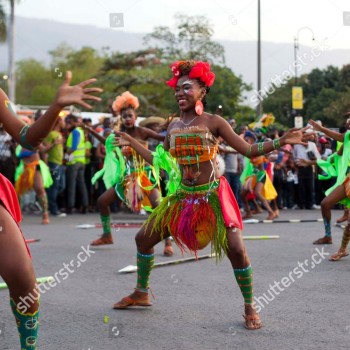
New Year’s Day/Independence Day
Date: 1st January
The people of Haiti celebrate both New Year's Day and Independence Day on January 1, when they declared their independence from the French in 1804. Thousands of people assemble in the capital city of Port-au-Prince to see the parades and to visit the National Palace on the Champs de Mars. They set off fireworks, dance in the streets, and sing the national anthem, which honors their founder, Jean-Jacques Dessalines, the hero of the anti-French revolt.
According to Haitian custom, whatever happens to someone on January 1 is indicative of what will happen to them during the coming year, motivating even the poorest people to make an effort to put on new clothes, visit their friends, and give and receive gifts in the hope that these efforts will be rewarded in the coming year.

Ancestry Day
Date: January 2
The Vodou festival of Fet Gede, also known as the Festival of the Ancestors, is the Vodou religion equivalent to the Mexican Day of the Dead and Mardi Gras combined. The people of Haiti converge to the capital to dress up, take to the streets, and dance in a procession towards the main cemetery to pay tribute to the Gede (spirits of the Vodou religion).
As the crowd makes their way through the city towards the graveyard, they carry photographs or images of their ancestors to honor them or bring unique offerings such as their favorite alcohol or coffee.

Carnival
Date: February or March
The festival of Carnival is similar to Carnival in other Caribbean nations or the annual celebration held in Rio De Janeiro, however, with a Haitian twist. The streets are filled with imaginative costumes that are often politically motivated or are satirists of current events. Parades of colorful floats take over the streets as they blast music out to the erratic dancing of the crowd, while rum-fueled parties often end in the early hours of the morning.
The biggest Carnival celebration is held in the capital, Port-au-Prince, while smaller celebrations take place in towns all across the country. This festival is held over several weeks leading up to lent, with festivities kicking off at the start of February.
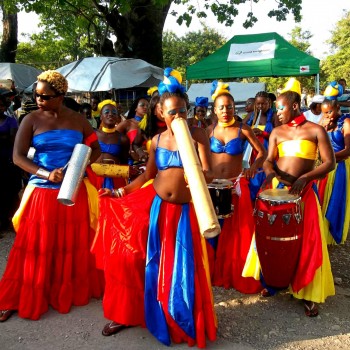
Rara
Date: January 6
Rara is a series of music festivals in Haiti held numerous times over the Lenten period. Songs are always performed in Haitian Kreyòl and typically celebrate the African ancestry of the Afro-Haitian masses.
They involve native Haitian instruments, including bamboo trumpets, drums, bells, and maracas. Rara's lyrics also often address complex issues, such as political oppression or poverty.
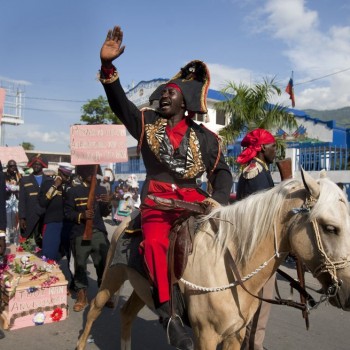
Dessalines Day
Date: 17th October
On October 17th, Haitians honor the death of Jean-Jacques Dessalines, a military general responsible for naming modern-day Haiti and later an emperor of the country. While his leadership is not wholly revered, even deemed brutal, Dessalines is respected by the Haitian people for his part in establishing the country. Haitians are proud that their country became one of the first independent nations in the Americas and was the first-ever republic to be led by people of African descent.

Le Festival du Rhum Haiti
Date: 14 November
Inspired by the Paris Rum Fest and the Festival of cane in Martinique, the Haitian Rum festival celebrates alcoholic beverages from across the coast.
It started in 2014, and the event features tastings, workshops, and cooking demonstrations by renowned rum experts. There is a wide selection of moonshine and rum flowing in every direction.
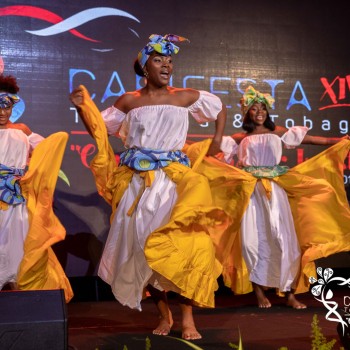
Carifesta
Date: August 21
Carifesta is a festival for and about the people, an exuberant extravaganza of Caribbean art, music, and dance. The event uses Caribbean performance culture as a point of unity between the many regions of the islands.
The event is always long-lasting; the first Carifesta in Guyana lasted for three weeks. The next Carifesta was held in Jamaica in 1976 and lasted 11 days, while the third took place in Cuba in 1979 and lasted for two weeks. Ensure to bring your dancing shoes if attending this festival, as the entire event's music and movement are infectious and incredibly enjoyable.
Attractions / Top Sights
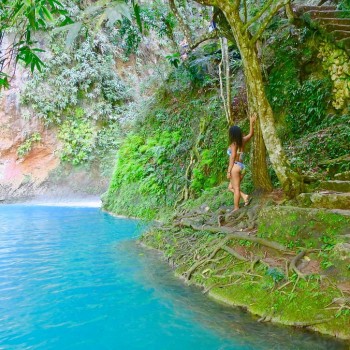
Bassin Bleu
When to visit: late November to early May.
When to visit: https://theculturetrip.com/caribbean/haiti/articles/the-top-10-most-beautiful-places-in-haiti/
Bassin Bleu is a natural water site located 12 kilometers (7.5 mi) northwest of the city of Jacmel, in the Sud-Est department of Haiti. It is a series of three pools along the Petite Rivière de Jacmel. It is a winding road in the mountains allowing access to the site.
Getting into the best available part and diving from several levels requires about a 20-minute hike, then roping down a 12 feet (3.7 m) rock face. Locals are often present for guidance and steadying. As of 2018, each visitor pays an admission fee of 100HTG at the tourism office, and then one can walk there independently or hire a local guide for a price (about 100HTG per person). Additionally, there is a 100HTG parking fee per car. It is a winding road in the mountains allowing access to the site. Locals are often present for guidance and steadying. As of 2018, each visitor pays an admission fee of 100HTG at the tourism office, and then one can walk there independently or hire a local guide for a price (about 100HTG per person). Additionally, there is a 100HTG parking fee per car.
.jpg)
Labadee
When to visit: December and April
Secret island destinations are popular ports of call for cruises in the Caribbean, but Labadee, Haiti, is a little different. Labadee, Haiti is Royal Caribbean’s private cruise resort with all the beach attractions, watersports, and fun activities that cruisers look forward to. This 260-acre resort is on a coastal peninsula rather than a private island.
One of the advantages of visiting Labadee is that even the largest Oasis-class ships can moor at the pier, avoiding the need for tenders. The secure gated resort is just over 800 meters long and 400m wide and is very easy to walk around.
Labadee is an exciting place to spend a day. It has four beautiful white sandy beaches, and the warm Caribbean waters are perfect for swimming and a host of watersports. Labadee also has some adrenalin rides, including an alpine roller coaster and one of the longest zip-lines over water anywhere in the world.
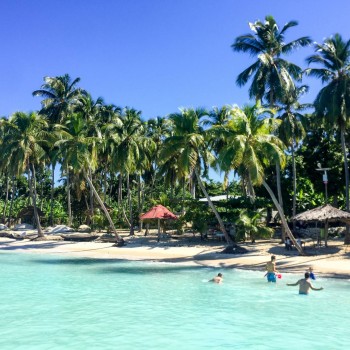
Kokoye Beach
When to visit: August to October
Kokoye Beach is an altogether different sort of luxury. Set into the unrivaled beauty of Haiti's south coast, the pristine cove of Kokoye is just an hour's boat ride from Petit-Goave. Kokoye Beach is one of the few beach excursions in Haiti that is set up for tourists, with all-inclusive boat trips departing daily. It's a way to experience Haiti's white sand and lagoon-blue wonders in comfort and on a budget.
The quality of services in Kokoye won't disappoint. Pearl white sand and calm water - are the main advantages of Kokoye Beach. It is not easy to get here (a boat trip from the Marina Blue pier will take about 1.5 hours), but it's worth it. There's a clear view of the entire shoreline. Lovers of water walks can hire a boat. The beach has showers and locker rooms and tables and chairs for camping. Except there's no electricity on Kokoye Beach.
You can go snorkeling in this part of the island: some reefs are worth looking at. Kokoye Beach is ideal for sunbathing, swimming, fitness jogging, and evening walks. Twenty minutes to the north of the beach, there's a sea cave, an attractive destination for curious travelers.
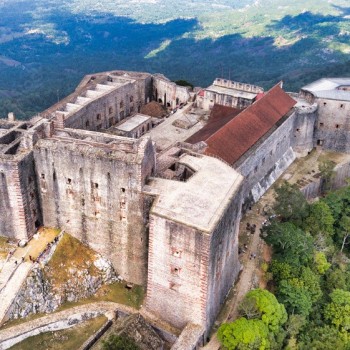
Citadelle Laferrière
When to visit: November to March
Citadelle Laferrière, known to locals simply as La Citadelle, is the largest fortress in the Americas. Haitians call it the eighth wonder of the world. The mountaintop fortress is massive, rising a vertiginous hundred and thirty feet from the mountaintop of Bonnet a L’Eveque, around 3000 feet above sea level. The Citadelle commands unparalleled views in every direction over the surrounding landscape of jungle-clad mountains, rivers, and oceans.
Citadelle Laferrière is Haiti’s most popular tourist destination for Haitians and visitors alike and occupies a visible place of pride in Haitian culture. Visitors can spend a few hours exploring the historic site. You’ll discover ramparts, drawbridges, canon batteries, galleries, corridors, hidden passages, and blind corners designed to outwit invaders. Most of the windows and ramparts overlook sheer drops down the flanks of Pic Laferrière and offer spectacular views of the north of Haiti. Inside the courtyard, there’s a brand-new museum, gallery, restroom, and a small gift shop selling drinks and postcards. You’ll recognize the signature triangular façade on 5 HTG coins and 100 HTG bills, and the covers of children’s school textbooks.
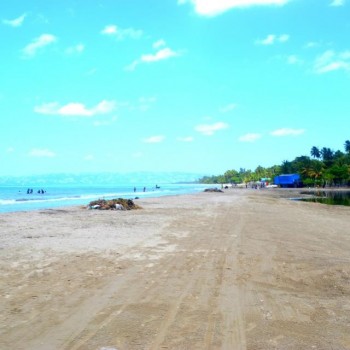
Gelee Beach
When to visit: November to March
Gelée Beach is located near Les Cayes in southern Haiti. Gelée Beach is one of the most popular beaches in Haiti. Compared to other famous beaches in Haiti, the surroundings are flat and open. Highlights include the beach-side Friday merchants and the chance to see cows grazing in fields that reach the water’s edge.
Pastoral scenery notwithstanding, the water is tropical, and the swimming here is lush. The beach itself winds around the southern coastline for miles, with soft, pillowy sand melting into some of the most crystal clear waters you’ll find anywhere on the island – or in the Caribbean, for that matter.
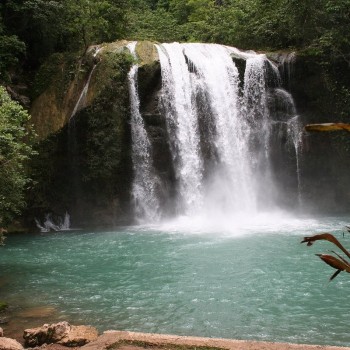
Saut-Mathurine
Saut-Mathurine Waterfall is a fantastic waterfall located in the Commune of Camp-Perrin in the Les Cayes Arrondissement, within the Sud Department, in the southwestern part of the Republic of Haiti. Surrounded by exotic wildflowers, lush green bushes, and tall trees, Saut-Mathurine Waterfall considers the most significant waterfall in the small republic.
Found on the Cavaillon River, the waterfall is 27 meters (89 feet) high, impressively 30 meters (98 feet) wide, and it falls into a natural pool of fresh and clear turquoise color. Visitors coming here can go inside the collection and even try jumping from the top of the waterfall; however, it should consider that the waterfalls are somewhat used to produce electricity.
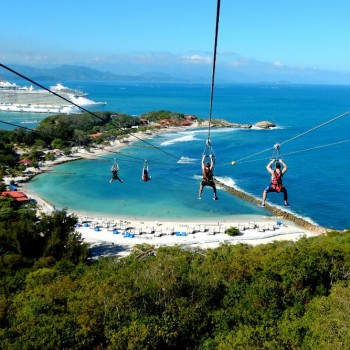
Zip lining Tour
Dragon’s Breath is the world’s longest water zip line and can only be experienced if you cruise with Royal Caribbean to their private island of Labadee. From a platform 500 feet above the beach, you will zip down 2600 feet carefree over the water at high speed to the beautiful land below while soaking in the view of your ship and the island. Enjoy a stunning aerial view of the lush tropical environment and crystal water. Offering a birds-eye view unavailable to walkers, the Dragon’s Breath Flight Line is a prevalent option on the island, incorporating a drop from the mountaintops down to the beach of Labadee.















